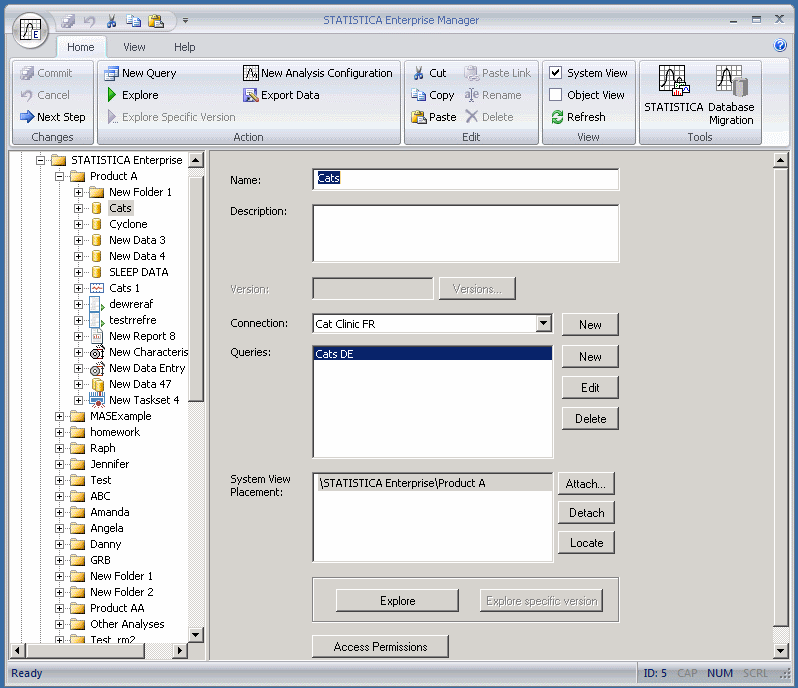Enterprise Manager Overview
The Enterprise Manager application is the main console through which Statistica Enterprise system administration tasks are performed.
The installation of the Enterprise Manager application is optional, so if you do not have a shortcut to it in your Start>All Programs>StatSoft>Statistica menu on your workstation, most likely it was not installed. Please contact your local system administrator for Statistica.
First, log on to Enterprise Manager. Based on the user account, Enterprise Manager allows for the activities and options specific to the Statistica Enterprise permissions for the respective account. If a specific feature is disabled, it is likely because the user account does not have permissions to perform the respective operation.
It is important to note that Enterprise Manager provides control over when the changes to configuration objects are committed to the Statistica Enterprise Configurations Database, the main repository for storing Statistica Enterprise configuration information. Pending changes are shown in bold in the Tree View:
Each of the configuration objects is stored in the centralized Statistica Enterprise database. They are stored there using a unique identifier for each class of configuration object. On the lower-right corner of the Enterprise Manager, the ID for the configuration object will be displayed.
Each of the configuration objects deployed using Enterprise Manager will have a unique name assigned to it per the system view folder so as not to cause confusion when accessing a defined configuration object.
Click
![]() Commit on the
Home tab in the
Changes group to commit all pending changes (alternatively, you can click the
Commit on the
Home tab in the
Changes group to commit all pending changes (alternatively, you can click the
![]() icon on the Quick Access toolbar in the upper-left corner of
Enterprise Manager or press CTRL+S).
icon on the Quick Access toolbar in the upper-left corner of
Enterprise Manager or press CTRL+S).
Click
![]() Cancel on the
Home tab in the
Changes group to cancel all pending changes, returning to the previous state before the edits or additions were made (alternatively, you can click the
Cancel on the
Home tab in the
Changes group to cancel all pending changes, returning to the previous state before the edits or additions were made (alternatively, you can click the
![]() icon on the Quick Access toolbar in the upper-left corner of
Enterprise Manager or press CTRL+Z).
icon on the Quick Access toolbar in the upper-left corner of
Enterprise Manager or press CTRL+Z).

